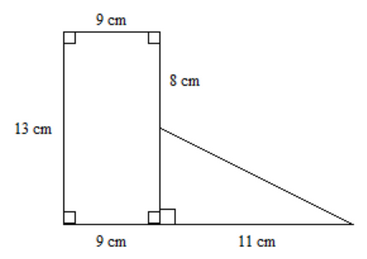Tip
Tap
a student's name
below to see what they need help with9 questions
Q.Find the area of the composite figure.
1
Text to speech
300 sec
111.41.C.11.B
Q.What is the area of the trapezoid?
2
Text to speech
300 sec
111.41.C.11.B
Q.Find the area of the kite.
3
Text to speech
300 sec
111.41.C.11.B
Q.Find the area of the regular octagon.
4
Text to speech
300 sec
111.41.C.11.A
Q.The figures are similar. Give the ratios for the perimeter and the area of both figures.
5
Text to speech
300 sec
111.41.C.10.B
Q.Find the area of the composite figure.
6
Text to speech
300 sec
111.41.C.11.B
Q.The area of a regular octagon is 35 cm^2. What is the area of an octagon with sides five times as long?
7
Text to speech
300 sec
111.41.C.11.A
Q.Two triangles each have two sides length 120 and 180. One has an included angle of 60 degrees and the other has an included angle of 40 degrees. What is the difference between their areas?
8
Text to speech
300 sec
111.41.C.9.A
Q.Find the area of an equilateral triangle with one side of 10.
9
Text to speech
300 sec
111.41.C.9.A


